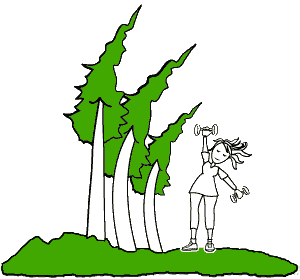What is Kyphotic Spine or Kyphosis?
Kyphosis is an exaggerated or excessive curvature of the upper back. There are many causes of kyphosis including degenerative diseases (i.e. arthritis), osteoporosis, developmental problems, injury, trauma, and poor posture.
Poor posture and a sedentary lifestyle are the main causes behind kyphotic spine symptoms in children and adults. When individuals have weak abdominal muscles and tight hamstrings, it can result in bad posture, mild to severe back pain, stiffness or tenderness in the spine, muscle fatigue and slouching. Today, many Americans spend hours unconsciously slouching in front of a computer or television, or sitting in workspaces with poor posture and bad ergonomics. It can take its toll on our bodies.
Kyphosis Exercises
Preventative Care:
As with many health concerns, it is much easier to prevent kyphosis from occurring that it is to reverse the condition. The good news is that stretching and exercise can help prevent kyphosis from occurring. There are several simple exercises you can incorporate in your daily life to help bring awareness to your upper body and posture.
Target areas:
The goal with kyphosis exercises is to stretch the tight areas like the chest and hamstrings and to strengthen the weak areas such as the upper back and abdominals. Here are a few exercises designed to address these target areas:
Shoulder Blade Squeeze
While seated or standing, slowly tuck your chin to your chest. Keeping your chest open, draw your shoulder blades together and hold for a couple of seconds. Repeat. Reminders! Relax and drop your shoulders while you perform this exercise. Breathe. Do this multiple times a day. You can do it anywhere! Also Jessica demonstrates here another option.
Door Frame Stretch
You can stretch your chest and shoulders in a number of ways using a door frame. Position your body close to a door frame with one foot generally centered in the frame and the other foot one step back. Place hands on door frame (your hands should be slightly in front of you in the starting position. Gently shift your weight forward until you feel a good stretch (see photos). Switch which leg is forward and repeat stretch. You can place arms at other angles to get a different stretch.
Hamstring Stretch
Lie on your back on the floor or on a mat. Wrap a towel, robe tie, exercise band, etc. around one foot or leg. Keep the other leg stretched out and relaxed on the floor. Gently pull the towel toward you until you feel you are getting an adequate stretch, keeping the other leg relaxed and flat on the mat. Hold the stretch for three slow and controlled breaths and release. Repeat stretch on same leg. Switch and repeat on opposite leg. Reminders! Many of us have tight hamstrings. Be gentle with this stretch. The towel/strap is designed to provide you with the control you need to adjust the stretch so it works for your body and comfort level. Don’t forget to breathe continuously throughout this exercise.
Reverse Fly
For this exercise, you will need a set of dumbbells. Keeping your back straight and your abdominals engaged, sit on a stool or chair and hold the weights. Bend over with your chest toward your knees, head down and the weights below your knees. Lift your arms out to the sides, no higher than shoulder level, the shoulder blades together. Return to start position. Perform 3 sets of 10 repetitions. Reminder! Make sure your elbows are slightly bent. Do not lift arms higher than shoulder level.
Benefits of Core Conditioning
Most people may think of core conditioning as “abdominal conditioning/strengthening,” but core conditioning is more than the proverbial six pack abs. While abdominal strength is important, core conditioning focuses on back (erector spinae and multifidus); abdominals (external and internal obliques, traverse abdominis, and rectus abdominus); and pelvis/hips (pelvic floor). Core conditioning builds balance and stability and improves posture. It trains the muscles in your upper body to all work together as a solid unit to support your frame and minimize injury, aches, and pains. Core conditioning tackles many of symptoms of kyphosis—weak upper back and abdominal muscles/tight chest and hamstrings. Integrating core conditioning into your daily routine, even one or two of the simple stretches outlined above, will make a difference in the way your body feels on a regular basis and may help prevent kyphosis in the future.
